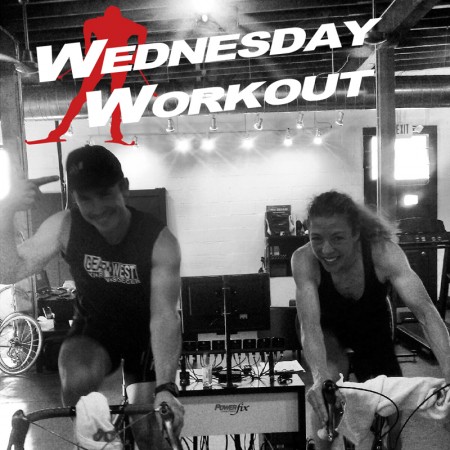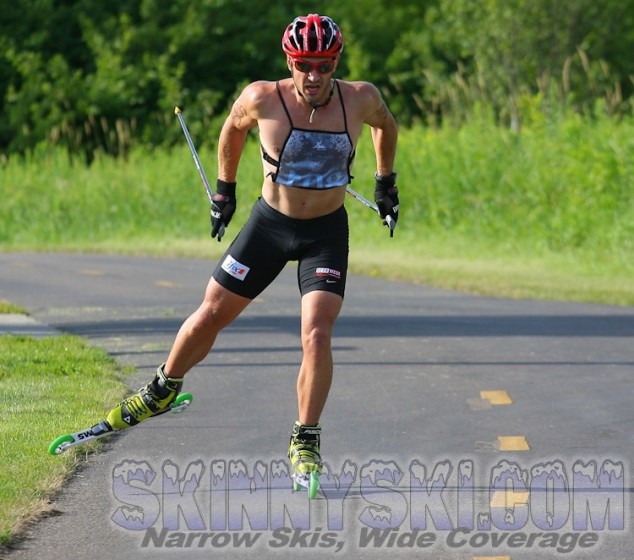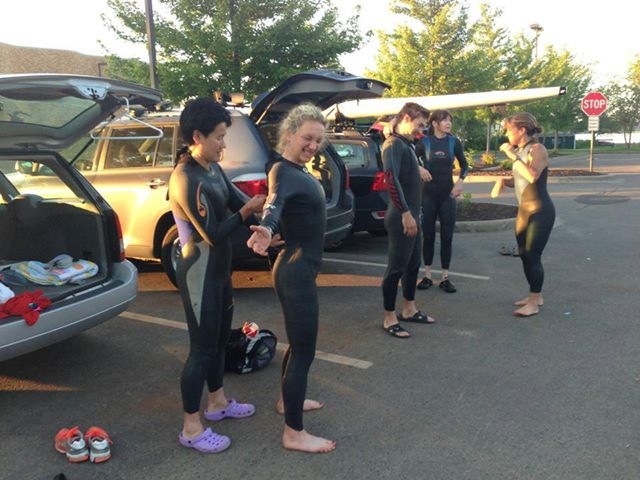
Welcome to Wednesday Workout, the newest workout series on FasterSkier. This week, Matt Liebsch, an independent skier sponsored by Borton Volvo and director of race services at Gear West in Long Lake, Minn., talks about balance — with work and training, ski-specific and cross training.
***
By Matt Liebsch
Last summer I roller skied my brains out. Coming back from a bike accident/concussion and a very bad ankle sprain, running was not an option and I was gun shy about getting on a bike.

I think all the ski-specific summer/fall roller ski training is great but it is important to keep training fun and diverse at times. This way, once late fall and winter arrive, I can be mentally fresh for 100-percent, laser-guided focus on ski training and racing.
To keep things fresh, this summer I have been doing a 2.5-mile, open-water swim every Wednesday. Our Gear West group swims to an island and back in Lake Minnetonka. I love swimming because it is low impact, involves a catch, pull, reach and rhythmic breathing.
We start at 6 a.m. on Wednesday. It is an early start to the day but we do this to avoid boat traffic. On the way out to the island I try to swim relaxed (I don’t have to try very hard, I am still half asleep) and on the way back I will push the pace a bit to 1:30 minutes/100-meters if I feel good.
After swimming for an hour and 15+ we will grab a quick coffee. If it is a volume week I may run, bike or roller ski after swimming for up to an additional two hours. Generally I get home in just enough time to make myself an omelet and then blast off to work so I can open the doors are Gear West by 10 a.m. No time for naps or massages.
I love swimming because it is low impact, involves a catch, pull, reach and rhythmic breathing.

Another mode of non-ski specific workload that I have introduced more frequently this year is cycling class. I have been doing CompuTrainer class at The Fix Studio once a week.
The benefit of doing intensity on a CompuTrainer system is that I can easily track power, training stress score and I can even see my pedal-stroke power profile. Another benefit is reduction in injury. It’s amazing how hard I can push myself at class on a CompuTrainer system with almost zero risk of injury.
I’ve noticed with the extra intensity on the bike my legs are rock-solid while skate skiing. My arms and abs are still strong from all the double poling and strength training but my legs have achieved a new level of skate specific fitness. I can only attribute this to the short focused cycling classes at The Fix Studio.
A typical cycling class at The Fix Studio includes intensity structured around your FTP, “Functional Threshold Power.” In cycling, everything is based off your power output. Being able to see power on the bike makes me wish it could be measured in skiing.
In skiing, all we have to measure work is speed (affected by roller ski speed, snow speed, weather, etc), heart rate (variable on a number of factors), lactate (also variable) and perceived exertion. Luckily the highly trained athlete knows their zones very well.
At class, we usually do a 10-minute warmup, 40 minutes of structured intensity, and a short cooldown. I generally like to ride outside before or after class to add a bit of volume.



